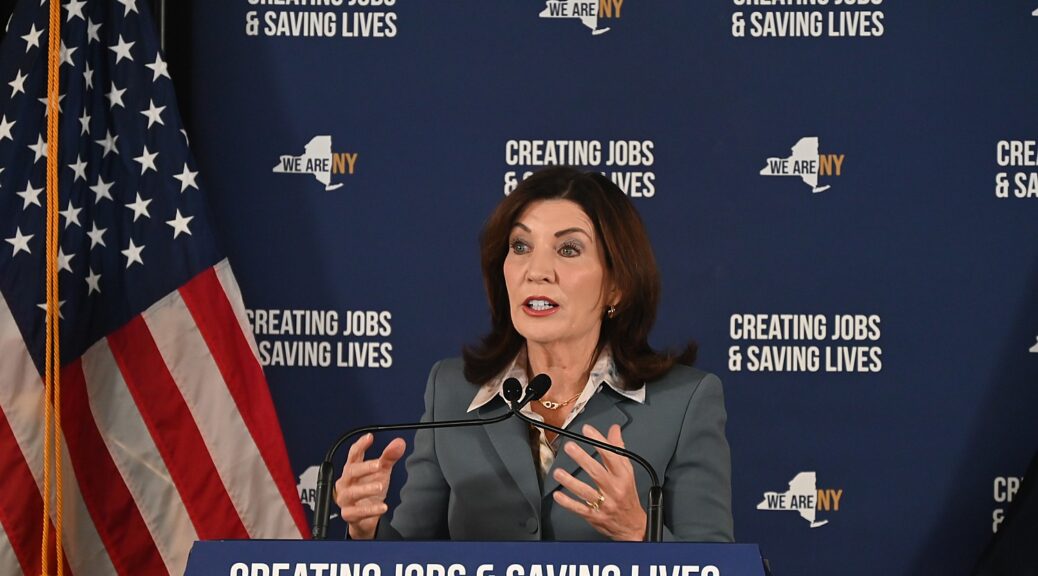Trump’s tariffs are likely to stress banks in developing nations – marketplace.org

Report on the Impact of US Tariffs on Emerging Economies and Sustainable Development Goals
1.0 Overview of Financial Sector Instability
Recent analysis indicates a deteriorating economic forecast for several emerging economies in the latter half of 2025. The primary catalyst for this downturn is the implementation of US tariffs, which has elevated lending risks. Consequently, Fitch Ratings has downgraded the banking sector outlooks for the following nations:
- South Korea
- Mexico
- Thailand
- Taiwan
- Vietnam
This increased financial instability poses a direct threat to the stable macroeconomic environment required to support the Sustainable Development Goals (SDGs).
2.0 Implications for SDG 8: Decent Work and Economic Growth
The tariffs are projected to have a substantial negative impact on SDG 8, which promotes sustained, inclusive, and sustainable economic growth, full and productive employment, and decent work for all.
2.1 Disruption of Export-Driven Growth
Emerging economies heavily reliant on exports to the United States are particularly vulnerable. Even a minor decrease in US consumption can cause a significant shock to these economies, disrupting the export-driven growth models that are fundamental to achieving SDG 8 targets. As noted in the case of Vietnam, whose banking sector outlook was revised from “improving” to “neutral,” reduced access to the US market directly curtails growth potential.
2.2 The Negative Investment Cycle
A sequence of negative economic impacts creates a cycle that impedes progress toward SDG 8:
- Reduced exports lead to slower economic growth.
- The capacity of nations and businesses to service existing debt is diminished.
- Rising debt-to-income ratios restrict access to new capital.
- Reduced borrowing capacity curtails investment in productive sectors, hindering job creation and economic diversification.
3.0 Challenges to SDG 9: Industry, Innovation, and Infrastructure
The tariffs undermine progress on SDG 9, which aims to build resilient infrastructure, promote inclusive and sustainable industrialization, and foster innovation.
3.1 Reduced Competitiveness and Foreign Direct Investment (FDI)
Many of the affected economies had previously made significant investments in their manufacturing sectors, positioning themselves as attractive alternatives to China due to lower tariff barriers. The new tariffs erode this critical cost advantage. This development makes it significantly more difficult for these nations to attract the Foreign Direct Investment (FDI) necessary for industrial development and infrastructure projects, key components of SDG 9.
4.0 Broader Consequences for Sustainable Development
The economic fallout from the tariffs extends to other critical SDGs, threatening the holistic vision of the 2030 Agenda.
- SDG 1 (No Poverty): Economic slowdowns and constrained investment directly threaten progress on poverty reduction by limiting job opportunities and suppressing wage growth.
- SDG 10 (Reduced Inequalities): The tariffs disproportionately harm developing and middle-income countries, potentially widening the economic inequality between them and developed nations.
- SDG 17 (Partnerships for the Goals): The implementation of unilateral tariffs challenges the principles of global trade cooperation and multilateral partnerships, which are essential for mobilizing the resources needed to achieve all Sustainable Development Goals.
SDGs Addressed in the Article
- SDG 8: Decent Work and Economic Growth – The article focuses on how US tariffs are projected to negatively impact the economic growth rates of emerging economies like Vietnam, South Korea, and Mexico. It discusses threats to export-driven growth, the ability to make debt payments, and the capacity for investment.
- SDG 9: Industry, Innovation and Infrastructure – The text highlights the vulnerability of the manufacturing sectors in emerging economies. It explains that tariffs reduce the cost advantage these countries had, making it harder for them to attract investment for industrial activities.
- SDG 17: Partnerships for the Goals – The core issue discussed is a disruption in international trade and finance. The article details how unilateral tariff policies by one country (the U.S.) create macroeconomic instability, affect foreign direct investment (FDI), and impact the financial systems of other nations, undermining global economic partnerships.
Specific SDG Targets Identified
-
SDG 8: Decent Work and Economic Growth
- Target 8.1: Sustain per capita economic growth. The article directly addresses this by stating that tariffs will “impact their growth rate and the amount of export-driven growth that they can drum up.”
- Target 8.10: Strengthen the capacity of domestic financial institutions. This is relevant as the article explicitly mentions that Fitch Ratings has “downgraded its outlooks for the banking sectors” in several emerging economies due to increased lending risks.
-
SDG 9: Industry, Innovation and Infrastructure
- Target 9.3: Increase the access of small-scale industrial and other enterprises… to financial services, including affordable credit. The article implies a threat to this target by explaining that a higher debt-to-income ratio means countries “going to be able to borrow less money. And so that’s going to affect how much they can invest.” This directly impacts the availability of credit for enterprises.
-
SDG 17: Partnerships for the Goals
- Target 17.3: Mobilize additional financial resources for developing countries from multiple sources. The article directly relates to this by stating that tariffs will make it “much more difficult for developing and emerging economies to pitch themselves as destinations for foreign direct investment.”
- Target 17.10: Promote a universal, rules-based, open, non-discriminatory and equitable multilateral trading system. The article’s central theme—the negative impact of President Trump’s tariffs—highlights a move away from such a system towards protectionist measures that disrupt global trade.
- Target 17.13: Enhance global macroeconomic stability. The article is a case study of how policy decisions in one major economy can create instability and negative cycles in others, as noted by the “sizeable impact” on emerging economies and the “cycle that they face” regarding debt and investment.
Indicators for Measuring Progress
-
SDG 8: Decent Work and Economic Growth
- Economic Growth Rate: The article explicitly mentions that the US pullback “is going to impact their growth rate,” making this a direct, though implied, indicator for Target 8.1.
- Credit Rating Agency Outlooks: The article uses “Fitch Ratings has downgraded its outlooks for the banking sectors” as a key piece of evidence. These ratings serve as a direct indicator of the health and capacity of domestic financial institutions (Target 8.10).
-
SDG 9: Industry, Innovation and Infrastructure
- Investment Levels: The article implies this indicator by stating that a reduced ability to borrow “is going to affect how much they can invest,” particularly in sectors like manufacturing that had previously seen high investment.
-
SDG 17: Partnerships for the Goals
- Foreign Direct Investment (FDI) Inflows: The article explicitly mentions that tariffs make it difficult to attract “foreign direct investment,” making FDI levels a clear indicator for Target 17.3.
- Tariff Rates: The entire problem is rooted in “President Donald Trump’s tariffs.” The level and scope of these tariffs are a direct indicator related to Target 17.10.
- Debt to Income Ratio: The article poses the question, “And if the debt to income ratio goes up?” This is presented as a key metric that affects a country’s ability to borrow and invest, serving as an indicator of macroeconomic stability (Target 17.13).
SDGs, Targets, and Indicators Analysis
| SDGs | Targets | Indicators (Mentioned or Implied in the Article) |
|---|---|---|
| SDG 8: Decent Work and Economic Growth | 8.1: Sustain per capita economic growth.
8.10: Strengthen the capacity of domestic financial institutions. |
Economic growth rate.
Credit rating agency outlooks (e.g., Fitch Ratings downgrades). |
| SDG 9: Industry, Innovation and Infrastructure | 9.3: Increase access of enterprises to financial services and credit. | Level of domestic investment. |
| SDG 17: Partnerships for the Goals | 17.3: Mobilize additional financial resources (e.g., FDI).
17.10: Promote a universal, rules-based, open trading system. 17.13: Enhance global macroeconomic stability. |
Foreign Direct Investment (FDI) inflows.
Imposed tariff rates. Debt to income ratio. |
Source: marketplace.org

What is Your Reaction?
 Like
0
Like
0
 Dislike
0
Dislike
0
 Love
0
Love
0
 Funny
0
Funny
0
 Angry
0
Angry
0
 Sad
0
Sad
0
 Wow
0
Wow
0
































_1.png?#)









































